
By Mx Kris Vyas-Myall
We are only in the second month of the new decade, but one thing seems to be clear. Women are no longer willing to be silent.

In Leeds, hundreds of women textile workers have walked out on unofficial strike. They are opposing the pay deal struck between their union and employer, claiming it is unfair that women will be getting smaller pay increases than their male co-workers.
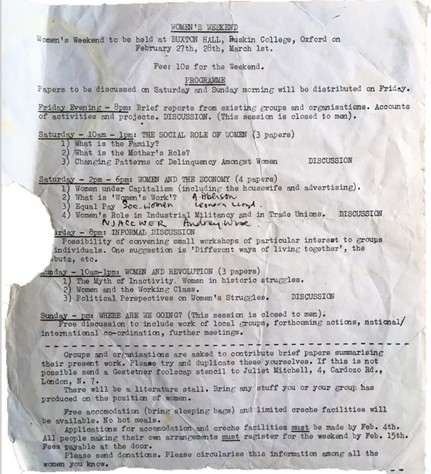
At the other end of the social scale, the hallowed halls of Oxford is set to host the “Women’s Weekend”. Tired of being ignored and shouted down by men at other meetings, this will be an all-women conference to discuss women’s history and their current position in the world.

In a more literal sense, a woman’s voice can now be heard on British Pop Radio. After hiring an all-male team from Pirate Radio and Radio Luxembourg to start Radio 1, the BBC have finally branched out and employed their first woman DJ. Annie Nightingale is only thirty but has already had an impressive career, including working as a journalist, presenting numerous music television programmes, having a modelling career and running her own fashion boutique.
Whether this will lead to changes in British science fiction publishing remains to be seen. The Current Issue of Vision of Tomorrow’s only female representation is in its review columnists. Maybe we need to organize our own flying pickets?
However, maybe some of this atmosphere is affecting our writers, as all these stories are, in one way or another, about people trying to break out of their social circumstances. So, let’s walk through the stench of cigar smoke in this gentleman’s club and check out the contents:
Vision of Tomorrow #6
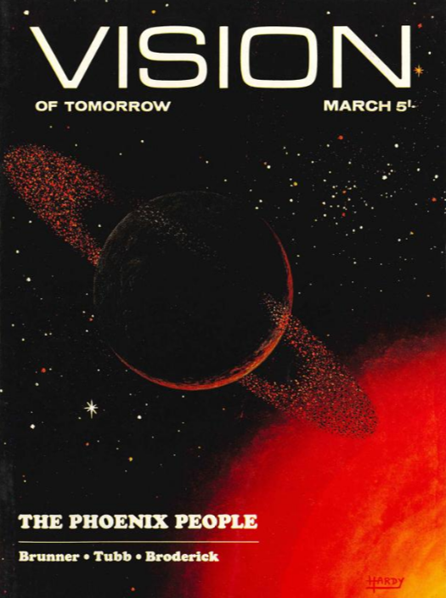
Cover Art by David A. Hardy
Whither SF? by Rev. John Clay
I would like to thank Philip Harbottle for realizing that he has run out of things to say and inviting in guest writers to open the magazine. Take note American publishers!
I was quite taken with this first installment, with the Reverend John Clay discussing the theological underpinnings of recent SF, q.v. Sheckley & Leiber, and going on to talk about how imagination is undervalued in our modern society.
Full-Five by E.C. Tubb
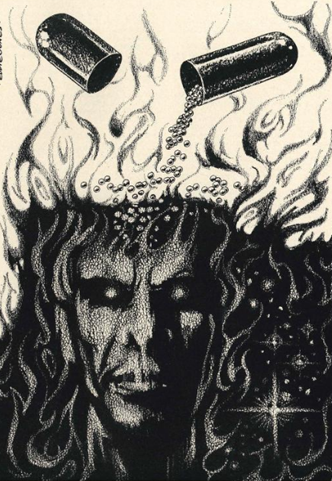
Illustrated by Eddie Jones
In the 21st Century there exists an incredibly powerful illicit drug called full-five. This has the power to give a sense of perfection to all five senses, for a short period of time. It is not chemically addictive, but it makes the real world seem like a nightmare in comparison.
When a chemist secretly making the drug is murdered, we follow how this impacts four different groups of people: his criminal associates; a rich customer and his dealer; a prize fighter; and the police investigating the case.
Given how well received his other works in Vision have been (including by yours truly) it is perhaps unsurprising Tubb would be allowed to take up a large portion of this month’s magazine. And he puts it to great use. Even with 16 pages at his disposal, it is not easy to create a fully visualized world, populated with solid characters. A lot of writers cannot even manage it in a novel.
I was worried at times it was going to be a case of an old man yelling at the young kids, but it is actually quite measured. It does get a touch didactic at points but this is necessary to give the different perspectives on full-five’s effect on society.
Even though I imagine others will question if I am taking something myself. I am giving this story a Full-Five Stars.
The Impatient Dreamers: Blast-Off
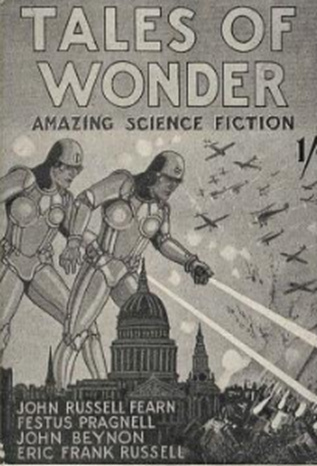
Reproduction of Issue 1 of Tales of Wonder. Cover by Nick
As the title suggests we now get into the real meat of things. With the British market finally starting to get its own specialist magazine titles in the mid-30s, there were some willing to take a chance on SF. This piece primarily focuses on the publication of Gillings’ Tales of Wonder and publisher Newnes’ plans for Fantasy.
Once again full of great detail, even more enhanced by the fact that he is now directly involved behind the scenes of both magazines. Possibly the most interesting part for me was the original guidelines Newnes put out for soliciting stories for Fantasy:
– No implausible flights of fancy, no weird fiction, no spiritual or ghost stories, no gore or sex, no animals with human attributes, no interplanetary travel, no medical or biological themes, and no time travel
– Stories particularly welcome are those envisaging new developments of existing technology, such as flight and television, or on future developments in warfare.
As you can probably imagine, Gillings was unimpressed by these limitations.
Continuing to cruise high at Five Stars
Fifth Commandment by John Brunner
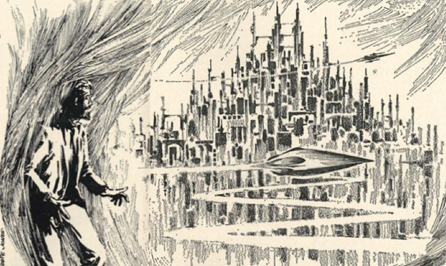
Illustrated by Eddie Jones
The prolific John Brunner seems to have generally moved away from short fiction to the more lucrative book market, this being only his second new short story in the last 12 months.
Grumman lives in Retirement, a self-contained community providing all the needs of the elderly. But why does that make him feel so dissatisfied? And why does no one in Retirement have any children?
Not the most original story but fulfills its purpose well.
Three Stars
The Phoenix People by Richard A. Gordon
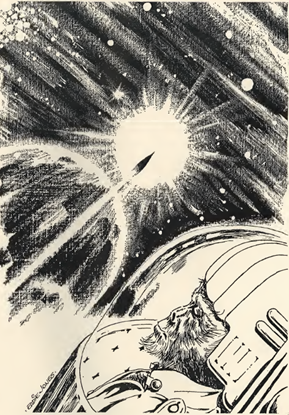
Illustrated by Eddie Jones
An expedition comes to visit an ancient planet called by its inhabitants “Earth”. The sentient population represent the longest recorded continual chain of evolution in the known universe, yet they seem to lack technological progress and are unresponsive to any queries. Just as the expedition is close to giving up, they discover an ancient buried spaceship, more advanced than any they have seen anywhere. What is it doing here?
I found this a fairly obvious tale, padded out with a level of verbosity that puts even me to shame. It is not bad as such, just rather dull and pointless.
Two Stars
The Visitors by Frank Bryning
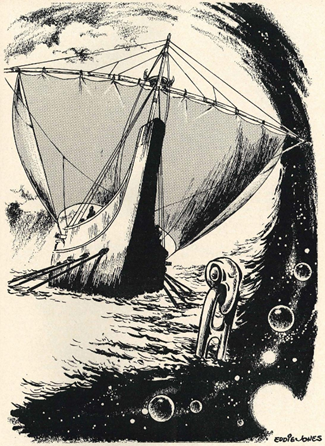
Illustrated by Eddie Jones
Alien visitors are watching a galley sail across an inland sea. When one of the passengers goes overboard, they pick him up to investigate the species further.

This comes with a special “Vision Vignette” logo. Unfortunately, the contents are lacking in any superlative qualities. It is the kind of tale that would have been considered old hat a decade ago. However, it is short and reasonably written, which saves it from the bottom rung of the ranking ladder.
Two Stars
The Star-Mutants by Damien Broderick
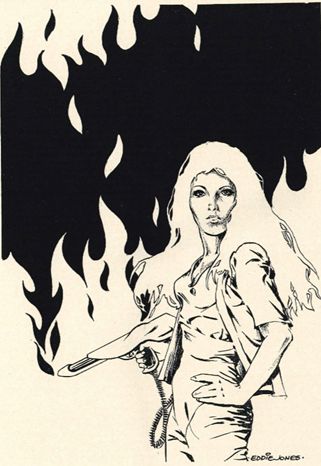
Illustrated by Eddie Jones, who I believe has excelled himself in this issue
The generation starship Man’s Dream set off from Earth a century ago. Fifteen years into the voyage, an outbreak of psychosis infected those born on Earth, whilst the children born on the ship were unaffected. With the help of the computer system, the space-born quarantine the Earth-born and try to provide them with help. However, space radiation mutates their children and a conflict between the two emerges.
Now, a hundred years later, the Space-Born are being slowly pushed back to a smaller section of the ship. The Space-Mutants live in a jungle (an outgrowth of untended hydroponics plants) where they raid into the Space-Born territory. Captain Van of the Space-Born realizes the time has come to make a decision that is contrary to their programming. Either forgo their mission and integrate into Space-Mutant society, or wipe out the mutants completely.
At first glance this may seem to be just another variation on Aldiss’ Non-Stop, but it possesses some elements that raise it up. Firstly, this is quite a dark, mature story where our narrator is faced with an unwinnable scenario, whatever he does something will be lost. Secondly, it is very fast paced and action-packed, making it a very easy read in spite of the heavy subject matter.
Whilst there may be more mention of breasts than is strictly necessary in the story, women are present throughout and have varied pivotal roles. Lady Violence in particular lives up to her name and I would willingly read a novel of her future adventures.
Four Stars
Fantasy Review
Katheryn Buckley reviews Barefoot in the Head by Brian W. Aldiss and has more praise for it than we had for the original short stories in New Worlds. Don Malcolm spends some time covering the innumerable flaws in Chariot of the Gods? by Erich von Daniken but still advises readers to try it and make up their own minds.
Finally, Robert Conquest writes another attempt to take down the new wave in his “review” of The New SF. The quote marks are mine as he barely mentions the stories inside, instead choosing to decry experimentation, get angry that the initials “SF” can mean something other than science fiction, and making rambling references to the 1920s.
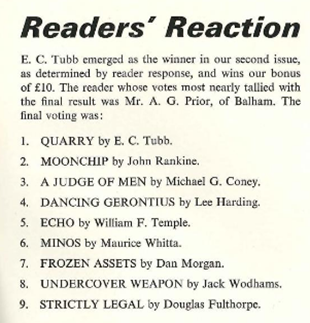
The belated poll results for issue #2. Apart from the high positioning of Moonchip I don’t particularly disagree with these rankings.
A Great Escape
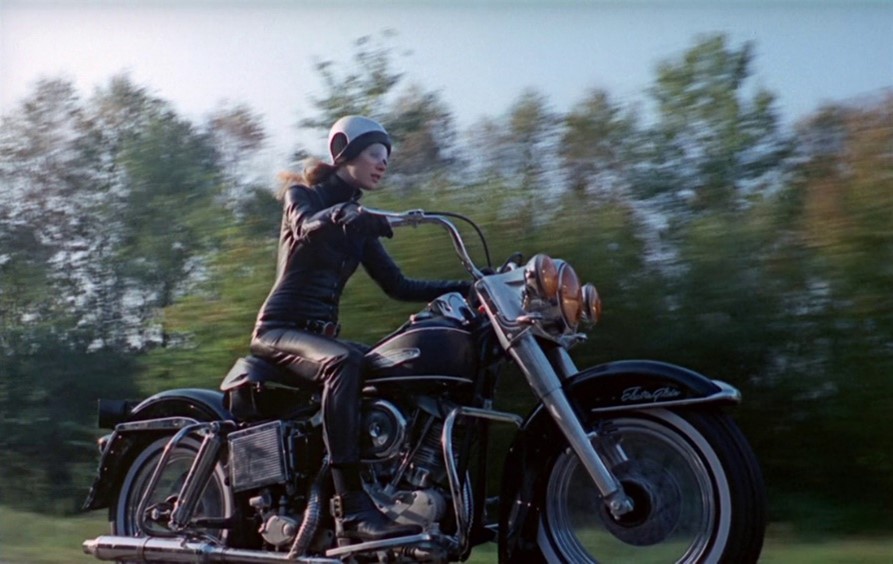
Marianne Faithful in Girl on a Motorcycle. Not quite as good a role as Steve McQueen got.
So, overall a pretty good selection of tales in this issue of Vision of Tomorrow, and a worthy diversion from your troubles for an hour or so. No stories are truly bad and a couple are very good indeed.
Just like the characters above, let us hope that society progresses enough that women can break out of their social confines and allow their voices to be heard just as loudly as men. Imagine if one day we could pick up a magazine to be surprised to find there are no women featured in an issue, rather than when one turns up.
[New to the Journey? Read this for a brief introduction!]

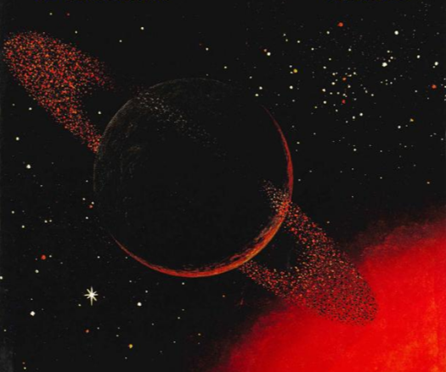


I find no comment access on the one about gay fandom.